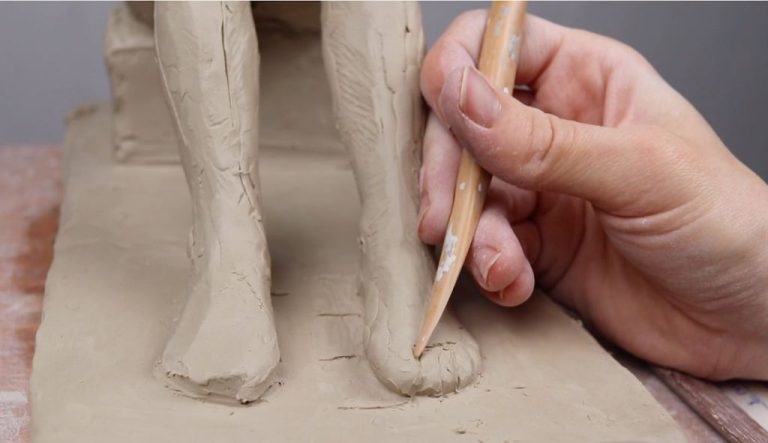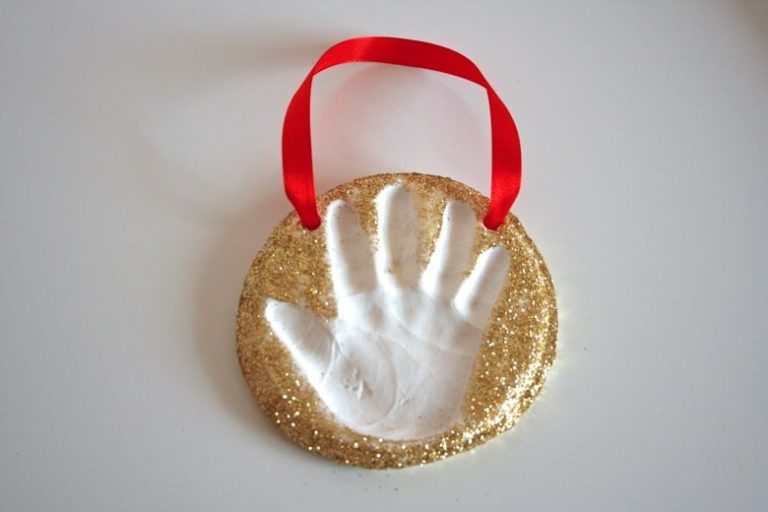Why Is Mccarty Pottery So Popular?
McCarty pottery refers to the stoneware pottery handmade by the McCarty family in Merigold, Mississippi starting in the 1950s. Led by potters Lee and Pup McCarty, the pottery became known for its beautiful glazes, earthy aesthetic, and utilitarian yet artistic pieces. Characterized by its rich colors, spontaneity, and imperfections, McCarty pottery has become a treasured tradition in the South. The pottery continues to be popular today, with pieces exhibited in museums and sought after by collectors around the world.
Origins
The famous McCarty pottery was founded in 1954 by Lee and Pup McCarty in the small Mississippi town of Merigold. As noted on the official McCarty Pottery website, “In 1954, master potter Lee McCarty and his brother L.J. “Pup” McCarty began making stoneware pottery in a shed behind their mother’s house in Merigold, Mississippi” (Our History | Merigold, MS).
Drawing inspiration from the local landscape and culture, the self-taught brothers created a distinctive style of folk pottery. Their early works featured influences from Native American and Mexican pottery traditions, with a focus on functionality and earthy, organic shapes and finishes.
Working out of their small studio in rural Mississippi, the McCartys laid the foundations for what would become an iconic American pottery brand known around the world.
Lee and Pup McCarty’s pottery is famous for its minimal yet artistic aesthetic, representing the simplicity and creativity of Southern culture in the mid-20th century. The McCartys used local Mississippi clay found along the banks of the Yazoo River to handcraft functional and decorative pottery with a distinctive look.
Some key characteristics that define the McCarty style include flowing, curving shapes often adorned with a thin wavy black line along the rim known as the “McCarty wave” (https://www.mccartyspottery.com/mccartys-pottery–history). Their glazes featured earthy hues like warm nutmeg, cobalt blue, and jade green inspired by the colors of the Mississippi landscape (https://www.mccartyspottery.com/mccartys-pottery–our-pottery). The pottery embodied relaxed rural life with handcrafted imperfections that gave each piece a unique handmade charm.
With its minimalist elegance and organic shapes, McCarty pottery exemplified midcentury Southern style, using local materials to reflect the region’s down-to-earth aesthetic. The pottery became popular for its simultaneously rustic and sophisticated look that celebrated Southern craftsmanship.
Rise to Prominence
The McCarty’s began selling their pottery at art fairs and exhibitions in Mississippi in the 1950s, quickly gaining popularity for their unique glazes and earthy aesthetic (source). Their pottery stood out for its simplicity and warmth, often featuring neutral colors with pops of blue and green.
As demand grew, the McCarty’s opened a pottery shop in 1956 to sell directly to customers. This allowed them to scale up production and achieve commercial success. By the 1970s, McCarty pottery was being sold in department stores across the country (source). Key milestones included being commissioned by Neiman Marcus and highlighted in national magazines.
The pinnacle of the McCarty’s success came when their work was collected by the Smithsonian Institution in 1979, cementing their legacy as masters of American folk pottery. This national recognition opened even more opportunities for the family business.
Legacy
The McCarty legacy has lived on through later generations of the family. After Lee McCarty passed away in 1988, the pottery was continued by his sons Charles, Harry, and Mike https://www.mccartyspottery.com/mccartys-pottery–history. They have preserved the unique glazes and production techniques pioneered by their parents. This has allowed collectors to still obtain authentic McCarty pieces that maintain the handmade imperfections and vibrant colors the pottery is known for.
McCarty pottery holds an important place in many museum and private collections. The Mississippi Folk Art collection contains over 100 McCarty vessels and platters, recognizing the cultural heritage they represent https://www.jacksonfreepress.com/news/2012/nov/26/mccartys-pottery-legacy/. Individual pieces are highly sought after at auctions and antique shows across the South. Their collectibility stems from the McCarty’s mastery of glaze techniques and the regional motifs reflected in the pottery designs.
Collectibility
McCarty pottery is highly sought after by collectors for its rarity and unique glazes. Vintage pieces from the 1960s and earlier fetch premium prices at auction due to high demand. In 2012, a rare 1960s McCarty vase in a one-of-a-kind experimental glaze sold for over $50,000 at a Morphy Auctions sale, setting a new record auction price for McCarty pottery (McCarty Pottery Collectors Page). Many avid collectors focus exclusively on completing sets of glazes, while others curate collections showcasing the evolution of forms over McCarty’s long career.
Notable collectors include the Cincinnati Art Museum, which holds over 150 examples of McCarty artworks (Cincinnati Art Museum), and the Smithsonian American Art Museum, whose Renwick Gallery owns signature pieces such as Locust Post (1970) (Smithsonian American Art Museum). High prices for vintage McCarty works reflect both art historical importance and decorative appeal.
Cultural Significance
McCarty pottery is considered a quintessential reflection of Southern heritage and identity. The pottery blends influences from Native American, European, and African traditions that came together in the American South (https://mississippiencyclopedia.org/entries/mccarty-pottery/). The pieces often depict pastoral Southern scenes like cotton fields, farm animals, and wildlife. This romanticized vision of the rural South holds wide appeal. McCarty pottery has been collected by everyone from everyday Southerners to celebrities like Oprah Winfrey and Morgan Freeman.
The pottery also represents the ingenuity and resilience of the McCarty family themselves. They maintained and grew their business for decades despite challenges like the Great Depression and competition from industrialization. The handcrafted nature of each piece is a testament to the McCartys’ hard work and persistence (https://www.mccartyspottery.com/mccartys-pottery–history). This handmade quality gives McCarty pottery an authenticity that connects people to the family’s history and to longstanding Southern craft traditions.
Artistic Qualities
McCarty pottery is known for its expressive shapes and forms that push the boundaries of traditional pottery. The potters experiment with fluid, organic forms that feel both ancient and modern. Each piece has a sculptural, handmade quality that gives it a sense of life and movement.
The glazes are another area where McCarty pottery displays creativity and artistry. They use bold, saturated colors like cobalt blue, spring green, and tomato red. The colors pool and blend in unique patterns on each piece. No two glazes are ever quite the same. Yet there is always a sense of balance between the glazes, with complementary colors playing off each other.
While McCarty pottery is fully functional and utilitarian, it elevates simple dishes and vases into art objects. There is an innate sense of creativity and joy in their work. The McCartys find inspiration from nature, music, and daily life. Their artistic vision shines through in the masterful melding of form, color, and utility.
Modern Reach
Although Lee and Pup McCarty passed away in the late 1980s, McCarty pottery continues to be produced by subsequent generations at the original studio in Merigold, Mississippi. Lee McCarty’s son, Mike, took over the studio and carried on the traditions and techniques. He expanded the offerings while maintaining the down-to-earth, handcrafted style (McCarty’s Pottery – Our Pottery). Today, Mike’s daughter Jennifer carries on the legacy as an accomplished potter in her own right.
The McCarty studio continues to nurture new artistic talent, providing space and mentoring for up-and-coming potters. Many have gone on to open their own successful studios while retaining the influences of McCarty style and sensibilities. The pottery field inspired by the McCartys has exploded in Mississippi, earning the state the nickname “Mud and Fire Country” (Large Vintage McCarty Pottery Nutmeg Clamshell Bowl).
McCarty pottery has also had a major influence on the wider American craft pottery scene. Its bold shapes, earthy hues, and handcrafted imperfections have inspired countless potters across the country. The pottery is now highly sought after by collectors and interior designers looking to add organic, rustic charm. McCarty pieces have graced the shelves of Anthropologie, been exhibited at the Smithsonian, and are pinned by thousands on Pinterest (McCarty’s Pottery). The pottery’s reach is a testament to the McCartys’ vision of functional, beautiful work infused with warmth and humanity.
Conclusion
In conclusion, McCarty pottery has remained popular and culturally significant for over a century due to its distinctive artistic qualities, collectibility, and origins in the American Southwest. Its earthy colors, handmade imperfections, innovative shapes and glazes came to define Pueblo pottery in the early 20th century. Though Maria and Julian Martinez passed on long ago, their designs and techniques continue to inspire modern Native American potters. Collectors still seek out rare signed pieces, and museums collect representative works. The market for antique Native American arts remains strong, and McCarty pottery is sure to retain its prominence for decades to come. Though times change, the enduring beauty and craftsmanship of McCarty pottery endures.



